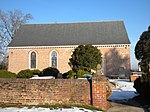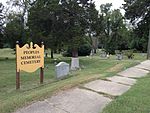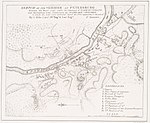Battle of the Crater

The Battle of the Crater was a battle of the American Civil War, part of the Siege of Petersburg. It took place on Saturday, July 30, 1864, between the Confederate Army of Northern Virginia, commanded by General Robert E. Lee, and the Union Army of the Potomac, commanded by Major General George G. Meade (under the direct supervision of the general-in-chief, Lieutenant General Ulysses S. Grant). After weeks of preparation, on July 30 Union forces exploded a mine in Major General Ambrose E. Burnside's IX Corps sector, blowing a gap in the Confederate defenses of Petersburg, Virginia. Instead of being a decisive advantage to the Union, this precipitated a rapid deterioration in the Union position. Unit after unit charged into and around the crater, where most of the soldiers milled in confusion in the bottom of the crater. Grant considered this failed assault as "the saddest affair I have witnessed in this war."The Confederates quickly recovered, and launched several counterattacks led by Brigadier General William Mahone. The breach was sealed off, and the Union forces were repulsed with severe casualties, while Brigadier General Edward Ferrero's division of black soldiers was badly mauled. It may have been Grant's best chance to end the siege of Petersburg; instead, the soldiers settled in for another eight months of trench warfare. Burnside was relieved of command for the final time for his role in the fiasco, and he was never again returned to command. Furthermore, Ferrero and General James H. Ledlie were observed behind the lines in a bunker, drinking liquor throughout the battle. Ledlie was criticized by a court of inquiry into his conduct that September, and in December he was effectively dismissed from the Army by Meade on orders from Grant, formally resigning his commission on January 23, 1865.
Excerpt from the Wikipedia article Battle of the Crater (License: CC BY-SA 3.0, Authors, Images).Battle of the Crater
Siege Road, Petersburg
Geographical coordinates (GPS) Address External links Nearby Places Show on map
Geographical coordinates (GPS)
| Latitude | Longitude |
|---|---|
| N 37.2183 ° | E -77.3777 ° |
Address
The Crater, Petersburg National Battlefield
Siege Road
23804 Petersburg
Virginia, United States
Open on Google Maps









